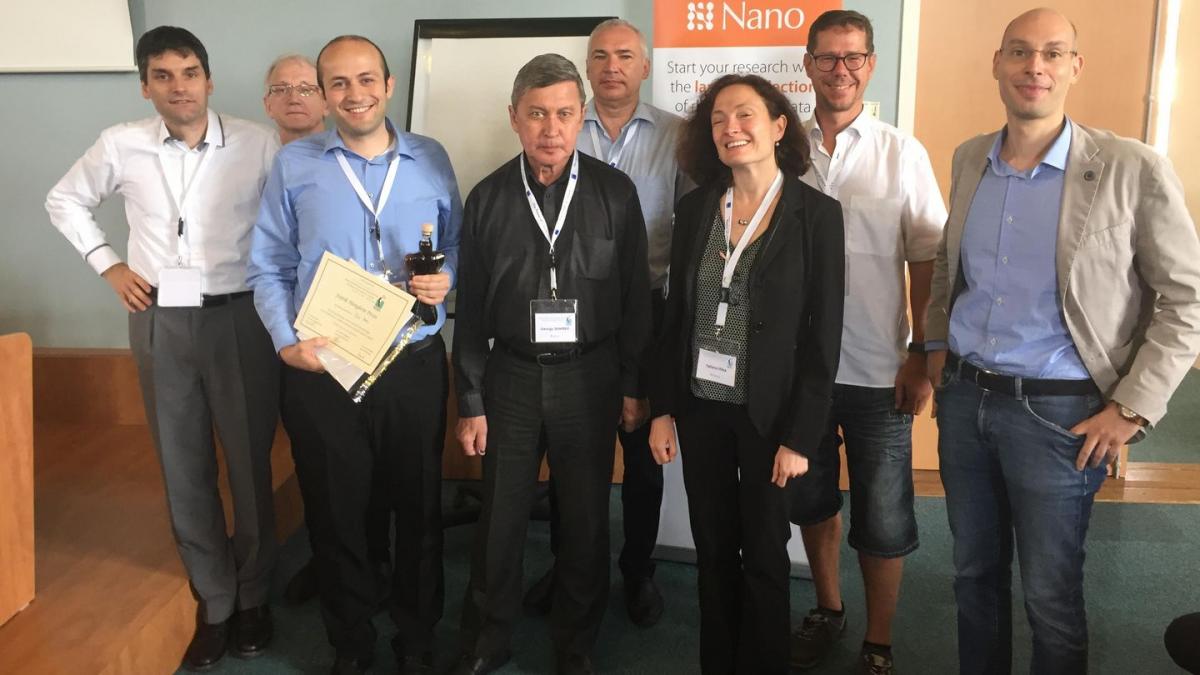A team of researchers at the University of Duisburg-Essen in Germany have produced several grams of nanoparticles at a 'record speed' of just one hour, using a laser system from Trumpf. Nanoparticles can enhance the surfaces of many products, from making eyeglass lenses more scratch-resistant or house paint more moisture-repellent, to prostheses and implants more biocompatible with the human body. Producing nanoparticles at this speed makes the new process feasible for use in industrial applications.
The scientists received the Fojtik-Henglein Prize for their proof of concept at the Angel conference in Lyon, France, which recognises groundbreaking published research into laser and nanoparticle colloids.

Bilal Gökce (second from left) with the Angel conference jury at the award ceremony in Lyon
Manufacturing nanoparticles for industrial use is still a costly and time-consuming business. One way of producing them is to fire a laser at a metal plate made of platinum, gold or silver. The metals are placed in a liquid such as water and the laser beam is then focused through this medium. The nanoparticles produced in this process are collected in the container and can subsequently be processed together with the liquid.
However, this method has proved to be far too time-consuming for industrial applications. A nanoparticle measures just eight nanometres, which means the laser beam has to hit the surface of the metal plate several billion times to ablate one gram of nanoparticles. The cavitation bubble that forms on the metal surface each time it is struck by the pulsed laser also slows things down. When the laser pulse hits the plate, the energy density spikes, briefly attaining a level high enough to shield the next laser pulse and prevent the ablation of new particles. The cavitation bubble generated by the laser pulse has to collapse before the current methods can continue producing nanoparticles. This can take up to one millisecond, causing a corresponding delay in the process.
Bilal Gökce's team of researchers at the University of Duisburg-Essen hav fastened the process using a powerful 500flex ultrashort pulse laser (USP) made by the Trumpf subsidiary Amphos. This USP laser generates more than 40 million pulses per second, each with a duration of three picoseconds. The system also features a scanner that realigns the laser pulse shielded by the cavitation bubble. That makes this system very efficient, because the laser beam can ablate the next nanoparticles from a different spot while the cavitation bubble is collapsing. Gökce and his team were able to show that this method produces up to four grams of nanoparticles per hour, which makes it feasible for the process to be used for industrial applications.

